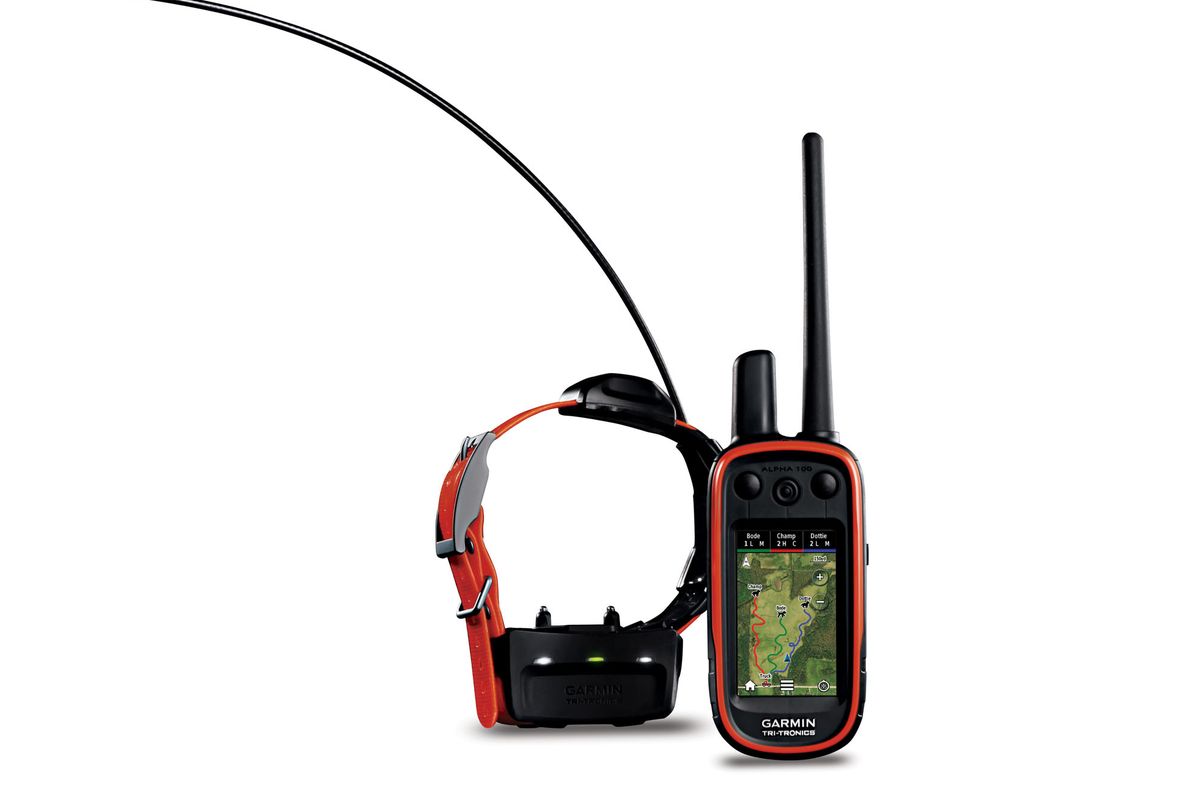GPS collars help hunters keep track of their dogs

It can be one of the lowest feelings in bird hunting.
Darkness is falling across a rugged and remote landscape at least five miles from the nearest house and 15 miles from the nearest town.
Coyotes are howling in many directions and a beloved bird dog is nowhere to be seen.
Too often such scenarios don’t have a happy ending.
Ted Gartner faced the above with total calm despite the absence of his wide-ranging English pointer, LuLu.
“She’s 175 yards over that hill,” Gartner said as he looked at a palm-sized device. “She’s coming in.”
Several moments later LuLu trotted into sight where Gartner had predicted.
Thanks to technology, hunters needn’t worry about losing their dog while afield.
It’s been about seven years since Garmin International, of Olathe, Kan., first matched its global positioning system technology with hunting dogs.
GPS units utilize satellites to mark their positions at all times, and record assorted information. The units on the Garmin dog collars also transmit their location to the hunter’s handheld display screen.
They’ve become a valued tool that Gartner, Garmin’s communications director and a fanatical upland bird hunter, helped develop and test.
“The main thing is the peace of mind you get with them. You know where your dogs are all of the time,” Gartner said. “You’re not hollering all the time and your dog’s not wearing one of those annoying beepers. You just get to enjoy the hunt and the dog work.”
Gartner uses GPS collars on LuLu and Vegas, a German shorthair, on birds ranging from Kansas quail, Minnesota ruffed grouse and Montana Hungarian partridge.
He said waterfowlers utilize the collars to track retrievers working tall cattails. Houndsmen rely on them even more.
“Our largest group is certainly the hound guys, guys who are running their dogs on raccoons, bears or big cats,” Gartner said.
“They’re often hunting at night, or in really remote mountains and their dogs may be a mile away.”
Under ideal conditions, the collars might register on the hunter’s tracking screen up to five miles away.
Gartner said the collars are also popular with those handling law enforcement, rescue and military canines.
The GPS collars provide more than a dog’s simple direction and distance.
The screen unit vibrates and emits a sound when the dog stops, like if pointing birds.
Gartner said one function is logging distances and routes traveled. Comparing the distances covered between four- and two-legged hunters is always interesting. After quail hunts last week, Gartner checked the trails of both dogs and himself. True to her breed, LuLu, the English pointer, logged the most distance, covering 7.4 miles in one 75-minute trek. Vegas tallied 5.3 miles while Gartner totaled 2.1 miles on the same hunt.
The units also provide trails so Gartner can later look at the workings of his dogs.
The GPS units also allow him to log important locations as a hunt progresses.
Gartner described it as a “digital diary” of his bird hunts as he records points made, birds flushed and shot at his hunting places. Such information comes in handy when he returns on future hunts.
Some GPS collars come with pre-programmed topographical maps so hunters will more easily know how to get to a distant dog, or the easiest way back to a vehicle.
Applications that feature aerial photography of wide areas are also available.
More and more state fish and wildlife agencies are providing online maps of public- and private-land hunting areas that can be downloaded to the unit.
“It’s nice to know for sure where you can legally be and where you can’t,” said Gartner, who enjoys hunting public lands.
Gartner could be getting by with Garmin’s Astro, a basic GPS collar system that does all of the above.
Instead, he’s been fitted LuLu and Vegas with the company’s Alpha, which incorporates an electronic correction collar with the GPS.
The latter technology became available when Garmin purchased Tri-Tronics, a leading training collar company, about 18 months ago.
Gartner monitored the collars of both dogs from the same monitoring screen. As well as a correcting electric charge, the collars could also emit a tone to signal the dogs to come to him.
Such conveniences don’t come cheaply, though.
Gartner said the GPS-only Astro normally sells for around $600. The Alpha, with its correction collar capabilities, retails for about $800.
“That’s a lot,” Gartner admitted, “but I’ve never met anyone who’s desperately looking for a lost dog who wouldn’t gladly pay twice that amount. It’s much more fun to just hunt, and not have to worry about lost dogs.”